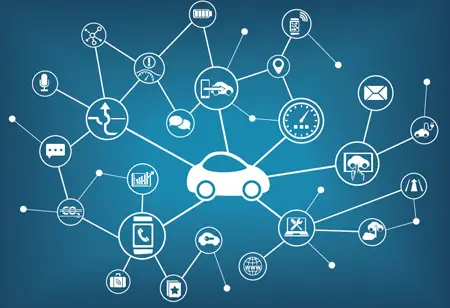In the modern automotive sector, smart cars are a well-established trend. However, this is for manufacturers and drivers who wish to track the entire vehicle's systems and monitor and analyze diagnostic data.
FREMONT, CA: While modern automobiles have the processing capability of multiple personal computers and are outfitted with vehicle software that contains millions of lines of programming code and generates terabytes of data, they remain distinct from linked automobiles.
A smart automobile can optimize its performance to save fuel consumption, display the optimal route based on current traffic and weather conditions, detect engine issues, and collect data from negotiating reduced insurance rates.
Software requirements for connected cars
All connected automobile software must adhere to a few critical requirements. The specifications cover both functional and non-functional characteristics (NFR). While applicable requirements define the objective of the software system, NFRs define the qualities and attributes of the software system that make it valuable and useable under specified conditions. Thus, the software should include the following:
Interoperability and Compatibility: Interoperability refers to the capacity of various components to communicate with one another. Compatibility and interoperability are critical components of software engineering and must be considered during the system design phase.
Scalability: Compatibility and interoperability affect a modular system's scalability. This is primarily relevant to the extent to which the number of components can be increased. Additionally, greater composability increases the reusability of the system's features, which may benefit the development process's efficiency by utilizing current or legacy components.
Dependability: Maintaining safety boundaries and ensuring that vital functions and reliability are critical and prioritized throughout system development, maintenance, and final deployment of dynamic functions. This encompasses, but is not limited to, security, reliability, fault tolerance, survivability, and performance of the system.
Concurrently, vehicle-related app development and integration strategies can be implemented. Certain OEMs, like BMW, run their development platforms and participate in the CCC's MirrorLinkTM program. Due to the high degree of complexity, variety, and compatibility concerns associated with connected automobiles in general, OEMs are strongly advised to utilize external developers and experienced partners to focus their internal resources on their company while generating a superior product.

 Copyright © 2025 AutoTech Outlook. All Rights Reserved | Privacy Policy | Subscribe | Sitemap | About us | Feedback Policy | Editorial Policy
Copyright © 2025 AutoTech Outlook. All Rights Reserved | Privacy Policy | Subscribe | Sitemap | About us | Feedback Policy | Editorial Policy